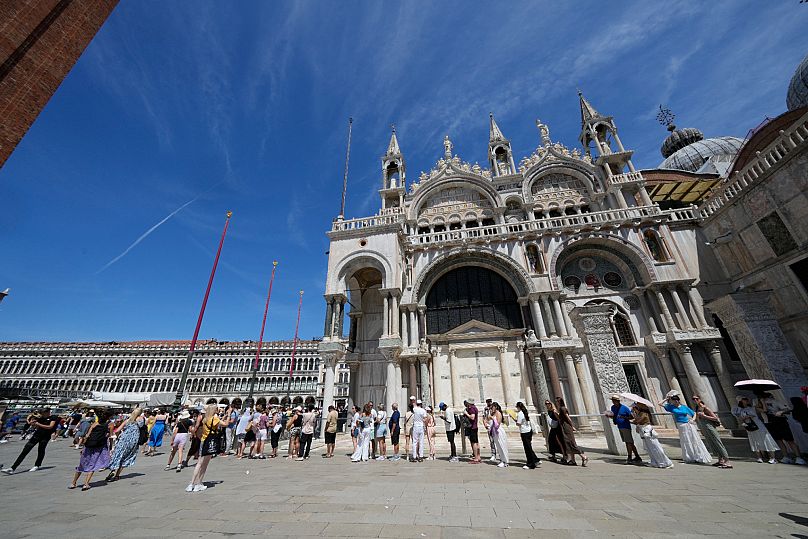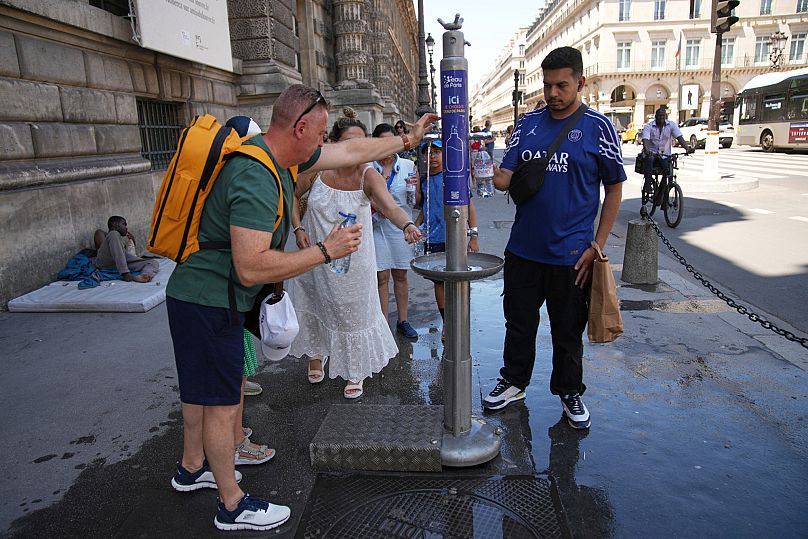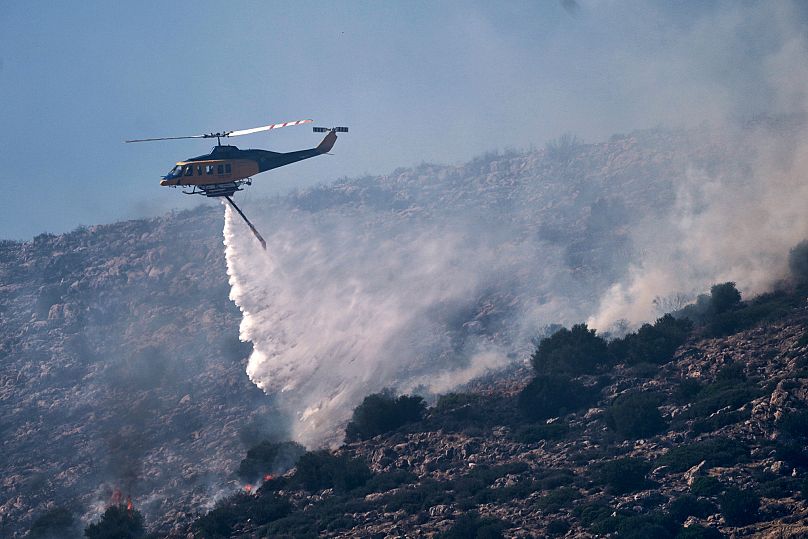Major heatwaves across southern Europe have pushed temperatures above 40°C in countries including Italy, Spain and Greece, as local authorities issued fresh warnings against the risk of wildfires.
A heat dome hovered over an arc from France, Portugal and Spain to Turkey, while data from European forecasters suggested other countries were set to broil further in the coming days.
New highs are expected on Wednesday before rain is forecast to bring respite to some areas later this week.
Experts link the rising frequency and intensity of these heatwaves to climate change, warning that such extreme weather events are becoming increasingly common across Europe's southern region.
“Extreme heat is no longer a rare event - it has become the new normal,” tweeted UN Secretary-General António Guterres from Seville, Spain, where temperatures were expected to hit 42°C on Monday afternoon.
Reiterating his frequent calls for action to fight climate change, Guterres added: “The planet is getting hotter & more dangerous — no country is immune.”
Europe swelters in above 40°C heat
Two-thirds of Portugal were on high alert Sunday for extreme heat and wildfires.
On Monday, authorities issued a red heat warning for seven of 18 districts as temperatures were forecast to hit 43°C, a day after logging a record June temperature of 46.6°C. Almost all inland areas were at high risk of wildfires.
In Italy, the Health Ministry put 21 cities under its level three “red” alert, which indicates “emergency conditions with possible negative effects” on healthy, active people as well as at-risk old people, children and chronically ill people.
Regional governments in northwestern Liguria and southern Sicily in Italy put restrictions on outdoor work, such as construction and agricultural labour, during the peak heat hours.
Italian trade unions pushed the government to expand such measures at a national level.

In Rome, tourists tried to seek shade near popular spots like the Colosseum and the Trevi Fountain, using umbrellas and drinking from public water fountains to stay cool.
Similar scenes were reported in Milan and Naples, where street vendors sold lemonade to tourists and residents to offer some refreshment from the heat.
In France, which was almost entirely sweltering in the heatwave on Monday and where air conditioning remains relatively rare, local and national authorities were taking extra effort to care for homeless and elderly people and people working outside.
Some tourists were putting off plans for some rigorous outdoor activities.

“We were going to do a bike tour today, actually, but we decided because it was gonna be so warm not to do the bike tour," said Andrea Tyson, 46, who was visiting Paris from New Philadelphia, Ohio, on Sunday.
Misting stations doused passers-by along the Seine in the French capital.
In southern Germany, temperatures of up to 35°C were expected on Monday, and they were forecast to creep higher until midweek, going as high as 39 degrees°C on Wednesday.
Some German towns and regions imposed limits on how much water can be taken from rivers and lakes.
In the UK, London is expected to hit 35°C on Monday, making it the hottest day of the year so far.
It is also the hottest opening day of Wimbledon on record and could break the tennis tournament's all-time record for heat. The current hottest opening day was set at 29.3°C in 2001, and the hottest day Wimbledon has ever seen was 1 July 2015 when temperatures reached 35.7°C.
A record-breaking June in Spain
In Spain, locals and tourists were desperately trying to keep cool this weekend, as the country sizzled in temperatures as high as 42°C in the southern city of Seville, along with other locations in southern and central parts of the country.
Southern regions of Spain recorded temperatures above seasonal averages, prompting health alerts and safety recommendations from authorities. In the town of El Granado near the Portuguese border, a new heat record was set with temperatures of 46°C.

The country’s national meteorological service Aemet, has said that June is set to break yet another record, becoming the hottest such month since records started.
It said that it recorded only two June heat waves between 1975 and 2000. Between 2000 and 2004, that number surged to nine.
Parts of Europe are on high alert for wildfires
Greece was again on high wildfire alert because of extreme weather, with the first summer heatwave expected to continue throughout the weekend.
A large wildfire broke out south of Athens on Thursday, forcing evacuations and road closures near the ancient Temple of Poseidon. Strong winds spread the flames, damaging homes and sending smoke across the sky.

Greek authorities deployed 130 firefighters, 12 planes and 12 helicopters to battle the blaze, while police evacuated 40 people, with five areas under evacuation orders.
France’s first significant forest fires of the season consumed 400 hectares of woods Sunday and Monday in the Aude region in the south. Water-dumping planes and some 300 firefighters were mobilised, the regional emergency service said. Tourists were evacuated from one campground in the area.
In Turkey, forest fires fanned by strong winds damaged some holiday homes in Izmir’s Doganbey region and forced the temporary closure of the airport in Izmir, the state-run Anadolu Agency reported. Authorities evacuated four villages as a precaution, the Forestry Ministry said.
Health risks from record-breaking heat
Experts warned that intense heat can affect daily life, especially for vulnerable populations such as the elderly and children.
Local authorities advised against physical activity during the hottest hours of the day and recommended drinking plenty of fluids.
A Lancet Public Health study published last year highlighted the increasing risk of heat-related deaths because of climate change. The study predicted that heat-related deaths could more than quadruple by midcentury under current climate policies.
While more people die from cold than heat, the study stressed that rising temperatures will offset the benefits of milder winters, leading to a significant net increase in heat-related mortality.







